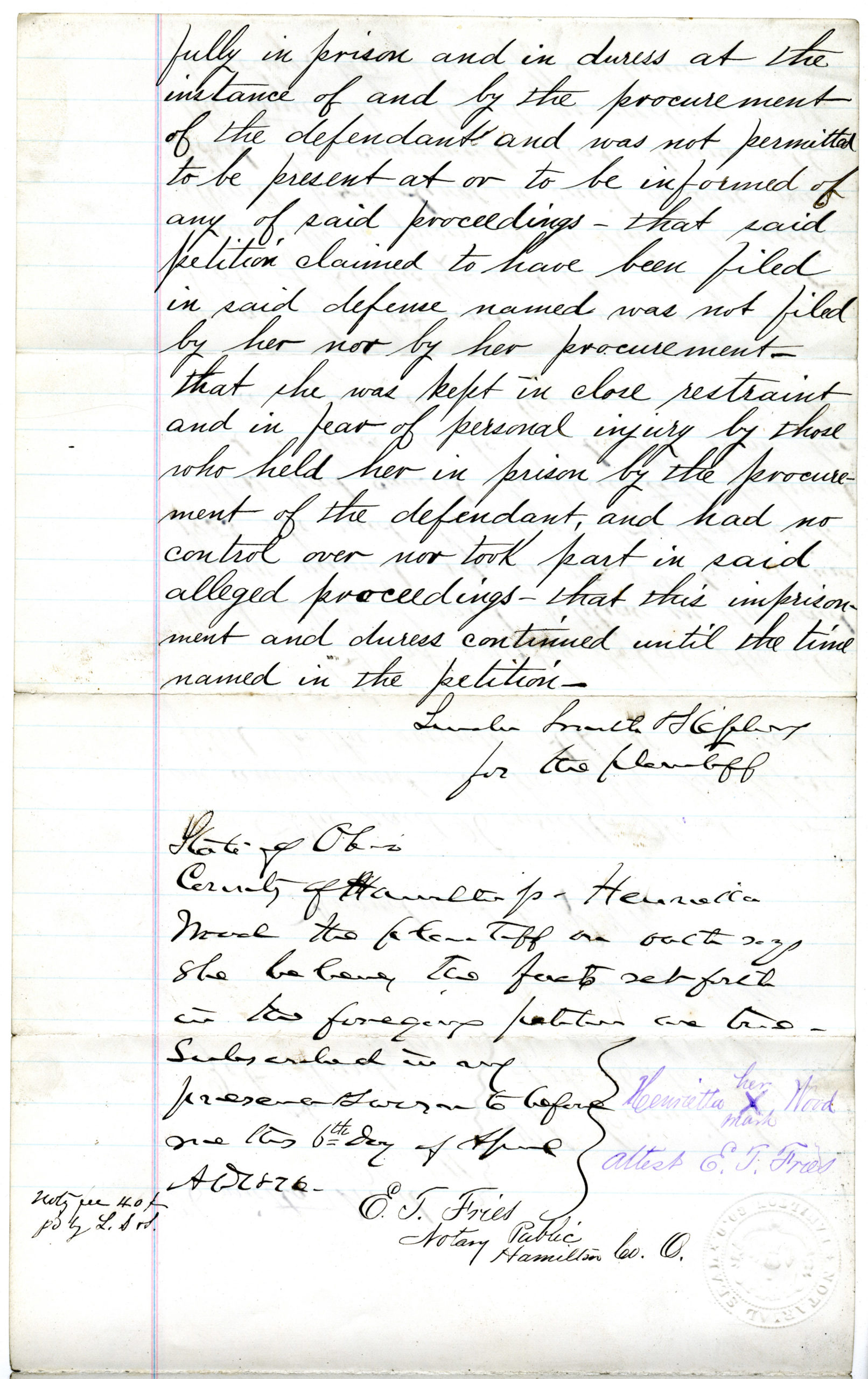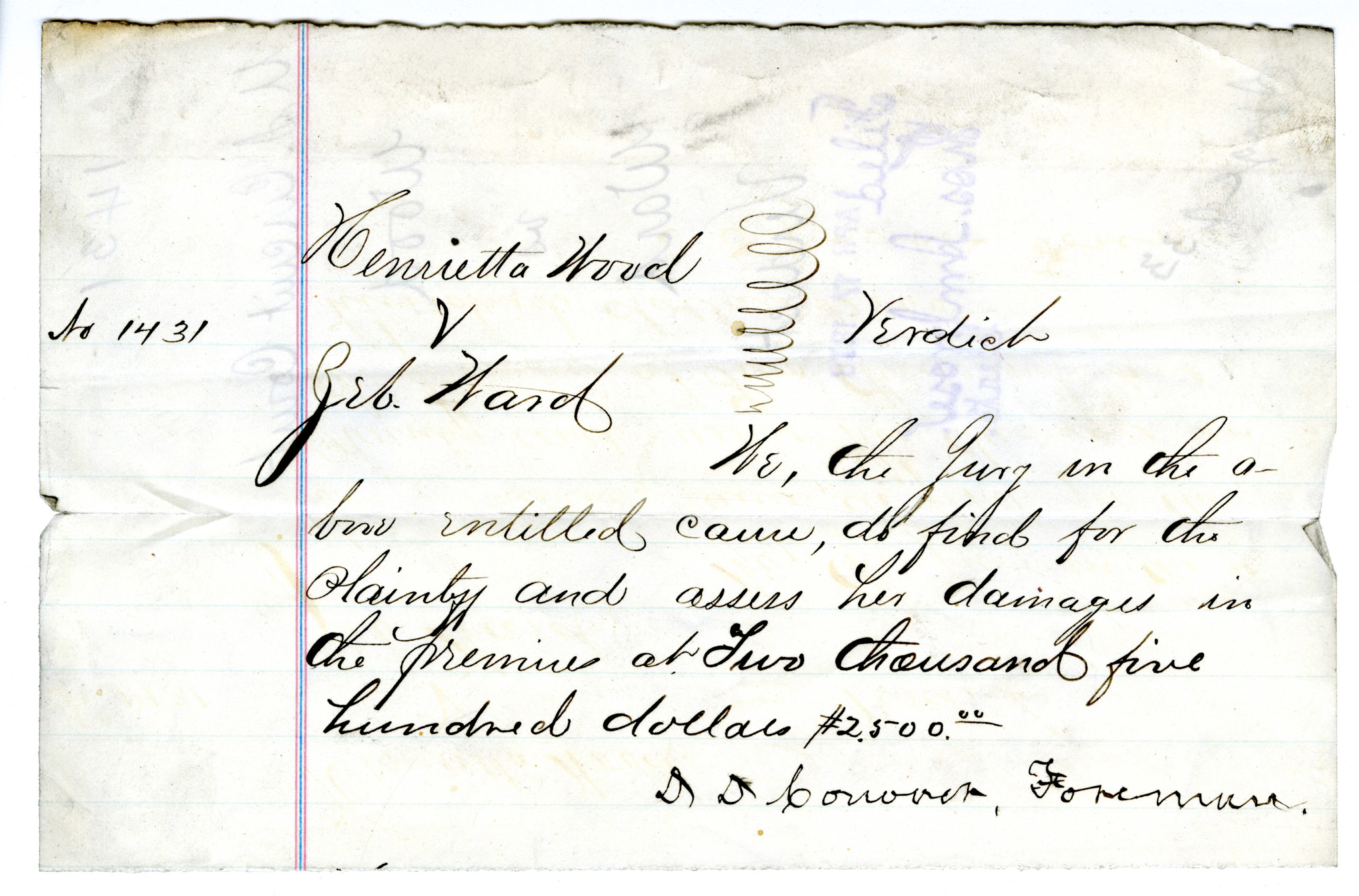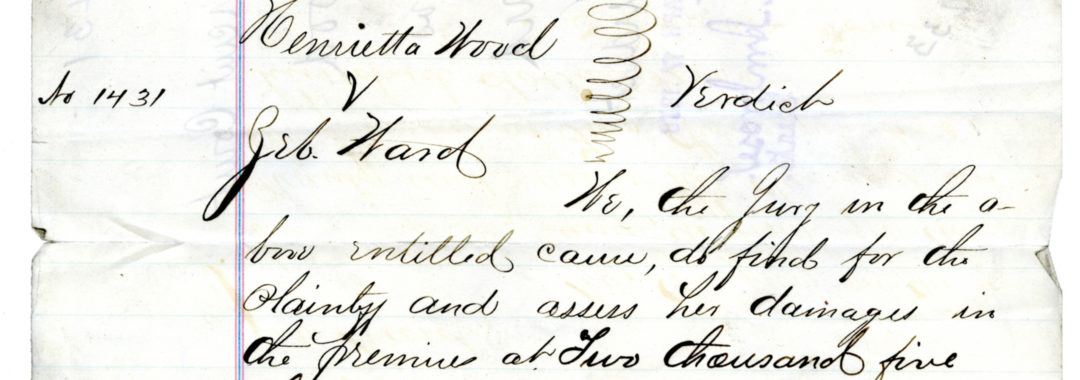After enduring the harsh conditions in Texas, Wood was able to make her way back to Ohio with little money after the end of the Civil War. Meanwhile, Ward took a job with a penitentiary in Tennessee, but quickly ended his time there and moved back to Kentucky. On a trip to a city outside of Cincinnati in 1870, a local sheriff found him and informed him that a lawsuit had been brought against him by Henrietta Wood. The charges were that she had been abducted, re-enslaved, and then sold to a plantation owner in Mississippi before being taken to Texas even though she was legally free. With the assistance of a Kentucky lawyer named Harvey Myers, she sued Ward for $20,000 in damages ($500 for every year she estimated her labor to have been worth while she was held in slavery) and lost wages because of her illegal enslavement. After many roadblocks and obstacles in the case, a local Cincinnati newspaper published Wood’s story in 1876, attracting attention from the public. Eight years since the filing of the lawsuit, a jury finally heard the case. Unlike her previous lawsuit, Wood’s chances in court had improved significantly since the end of the Civil War due to the Civil Rights Act of 1866 and the14th Amendment, which granted national citizenship to former enslaved individuals. In 1878, Ms. Wood won her case and was awarded $2,500 – well below the original amount. Nevertheless, her victory was recorded as the largest US court-awarded type of reparations. The news of the case’s outcome spread throughout the country. Though the prosecution filed for a new trial because the payment was well below the amount Wood originally requested, the judge hearing the case deemed the claim immaterial and the $2,500 award stood. Ward followed through with the payment.
Though Wood’s case was the largest, it was not unique. A free person was able to win “freedom suits” granted they involved the following: Plaintiffs alleged that they had been legally freed in a southern state like Kentucky by an owner in a will or by some other act of manumission, only to be held in slavery by another party; and plaintiffs who claimed to be free outside of Kentucky, only to be brought to the state and re-enslaved. While they won their cases, they were rarely paid restitution due to a law allowing defendants to choose not to pay.
Following the trial, Wood settled in Chicago, where she worked as a laundress. Her son worked various jobs including as a Pullman Porter. Feeling that he should be doing something more fulfilling, he enrolled in law school and became an attorney. It was reported that Wood used the money from her lawsuit to help her son buy a house and fund his legal education. While the restitution was a big victory for Wood, her former enslaver Zebulon Ward told a different version of the story. He made dismissive comments like Wood being the “last negro he paid for” instead of telling the whole truth about the judgment.
Henrietta Wood died in Chicago in 1912 and has inspired crusades for reparations in the generations that followed. This story brings up the complex idea of reparations as it continues to be discussed in today’s conversations. This story also informs subjects like the harmful legacies of slavery and white supremacy in American history.




